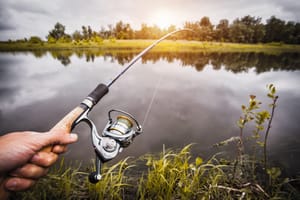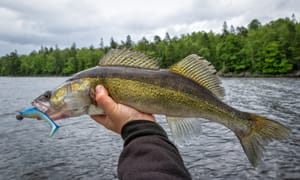Walleye jigging is an art that requires not just skill and patience but also the right equipment. One of the most crucial decisions you'll make is selecting the appropriate pound test for your fishing line. This choice can make the difference between a successful catch and a lost battle. In this comprehensive guide, we'll explore the ins and outs of choosing the best pound test for walleye jigging.
Key Takeaways:
- Understanding the importance of selecting the right pound test for walleye jigging.
- Factors to consider when choosing the pound test, including water clarity, jig weight, and fishing conditions.
- Practical tips for optimizing your walleye jigging setup for maximum success.
Understanding Pound Test and Its Importance in Walleye Jigging
When it comes to walleye jigging, the term "pound test" refers to the strength of the fishing line, specifically how much weight it can hold before breaking. The right pound test is crucial because it affects your ability to feel the jig, set the hook, and successfully reel in a walleye. A line that's too heavy may reduce sensitivity and make it difficult to detect bites, while a line that's too light could break under the pressure of a fighting fish.
Factors Influencing Pound Test Selection
Several factors influence the decision of what pound test to use for walleye jigging. Water clarity is a significant consideration; in clear water, walleye can be line-shy, so a thinner, less visible line is preferable. Conversely, in murky waters, visibility is less of an issue, and you can opt for a stronger line. The weight of the jig also plays a role; heavier jigs require a sturdier line to manage the increased weight and resistance during retrieval.
The Role of Water Clarity in Choosing Pound Test
Clear water conditions often call for a more delicate approach to walleye jigging. In these scenarios, a lighter pound test, typically in the 4-6 pound range, is ideal. This lighter line is less visible to the fish, increasing your chances of a bite. However, it's essential to balance invisibility with the risk of breakage, especially when fishing around structures or in areas with heavy cover.
Adjusting Pound Test for Jig Weight and Fishing Conditions
The weight of your jig is a direct determinant of the pound test you should use. Lighter jigs, around 1/8 to 1/4 ounces, pair well with lighter lines, while heavier jigs may require a line in the 6-8 pound test range to handle the additional stress. Additionally, consider the overall fishing conditions, such as current strength and the presence of snags, when selecting your line weight.
The Impact of Fishing Technique on Pound Test Choice
Your jigging technique can also influence the pound test you choose. Aggressive jigging might necessitate a stronger line to withstand the rapid movements and potential for snags. Conversely, a more finesse approach allows for a lighter line, enhancing sensitivity and the natural presentation of the jig.
Balancing Sensitivity and Strength for Walleye Jigging Success
Finding the perfect balance between sensitivity and strength is the key to selecting the right pound test for walleye jigging. A sensitive line allows you to feel the subtle bites of walleye, while sufficient strength ensures you can set the hook firmly and fight the fish without fear of the line breaking. Experimenting with different pound tests under varying conditions will help you find the sweet spot for your specific situation.
Popular Line Types for Walleye Jigging
Monofilament and braided lines are the most common choices for walleye jigging. Monofilament lines offer good stretch, which can be forgiving during a fish fight, and are less visible underwater. Braided lines, on the other hand, provide excellent sensitivity and strength for their diameter, allowing for a more direct connection with the jig.
The Verdict: What Pound Test Should You Use?
So, what pound test for walleye jigging is the best? The consensus among seasoned anglers is that a line in the 6-8 pound test range offers a good balance for most situations. However, always consider the specific conditions you'll be fishing in and adjust accordingly. Remember, no single pound test fits all scenarios, and personal preference plays a significant role.
Summary
Choosing the right pound test for walleye jigging is a critical decision that can greatly impact your fishing success. Factors such as water clarity, jig weight, and fishing conditions must be considered. A lighter line is generally preferred in clear water, while heavier lines may be necessary for larger jigs and challenging conditions. Ultimately, the goal is to balance sensitivity with strength, and often a 6-8 pound test line will serve you well in a variety of situations. Remember to adapt your choice based on your personal experience and the specific conditions of the day. Elevate your walleye jigging game by exploring our 7 BEST Walleye Jig Heads For 2024 - essential tacklebox must-haves for every serious angler!
FAQ Section
Can I use the same pound test for walleye jigging in all water conditions?
No, it's best to adjust the pound test based on water clarity and conditions. Clear water typically requires a lighter line, while murky water allows for a heavier pound test.
How does jig weight affect the pound test I should use?
Heavier jigs require a stronger line to manage the weight and resistance during retrieval. Lighter jigs can be used with lighter lines, enhancing sensitivity and presentation.
Is there a one-size-fits-all pound test for walleye jigging?
No, there isn't a one-size-fits-all pound test. Most anglers find that a 6-8 pound test line is versatile for various conditions, but always consider the specific environment and your personal preferences when choosing your line.



